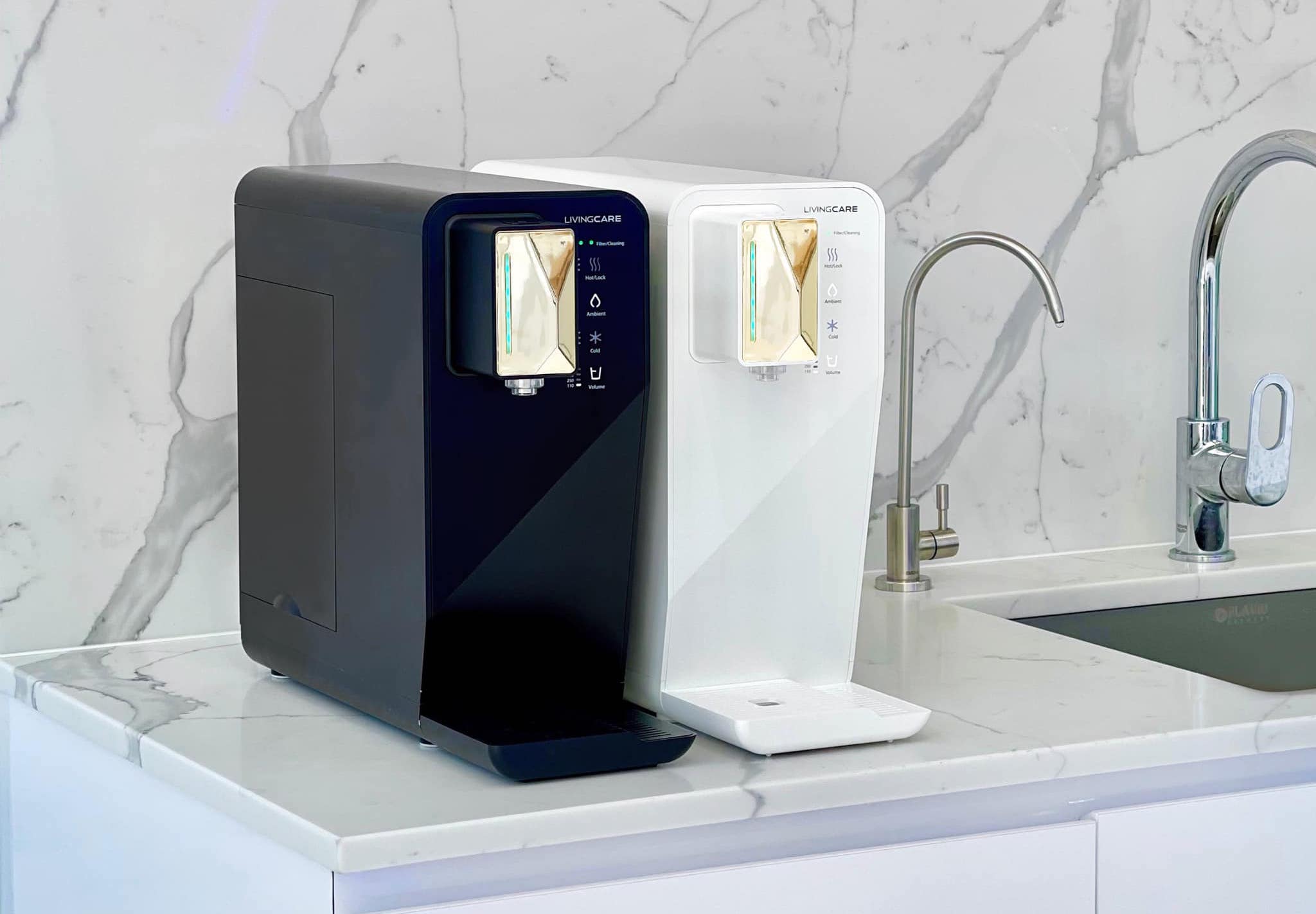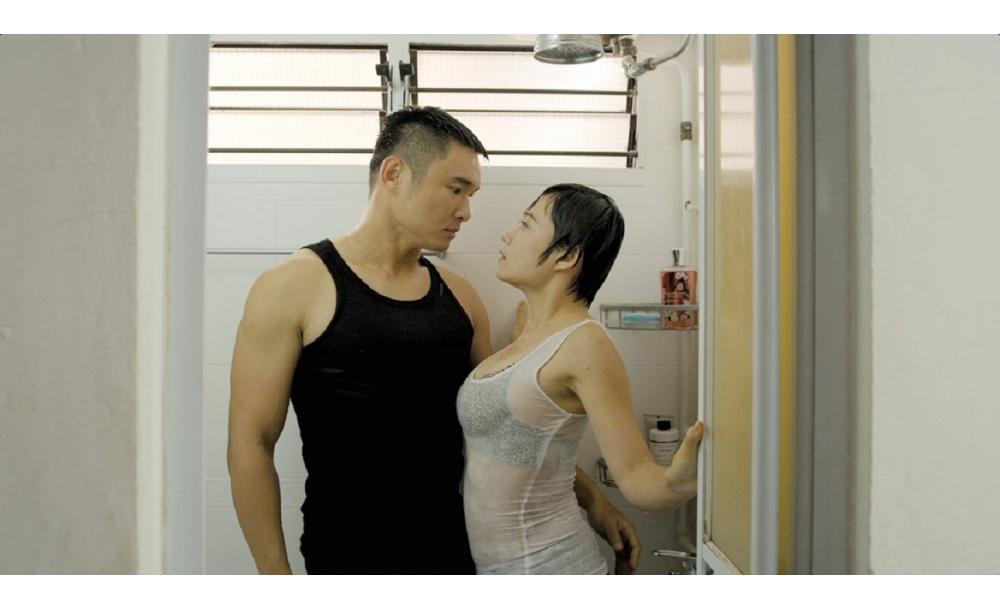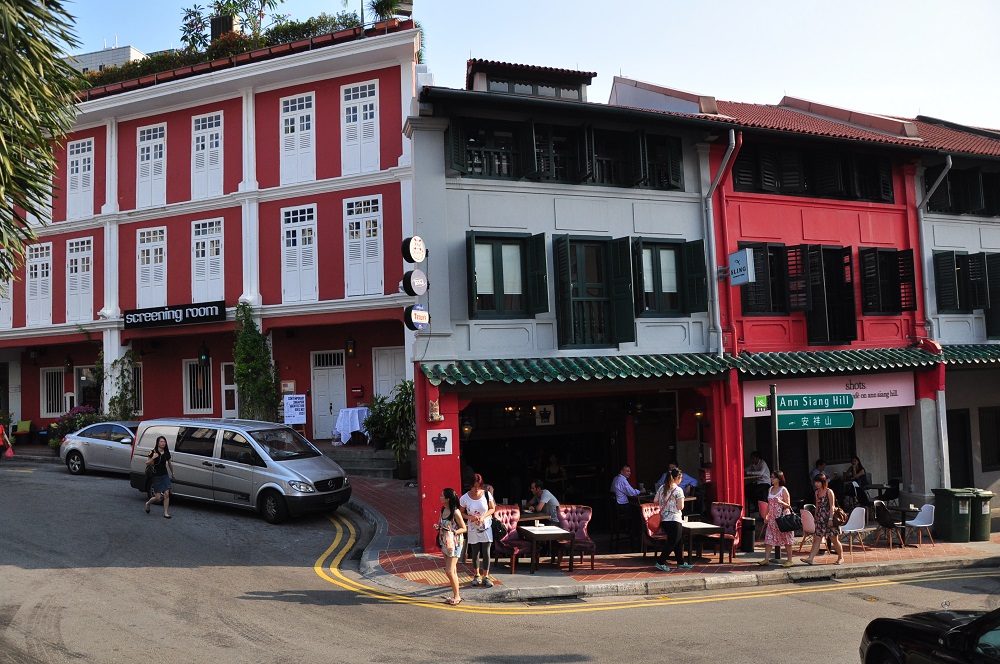Singapore has a lot more in common with the Japanese than you might think. Just ask Alvin Tan, of local art collective PHUNK, who collaborated with legendary artist Keiichi Tanaami in 2010 for the exhibition Eccentric City, who says, “There is a similarity between local and Japanese society in that we both pursue the concept of ‘mukokuseki,’ a ‘no nationality’ framework or view of the modern world. Mukokuseki is a sort of ‘New Internationalism,’ an inclusive philosophy to unite the world on equal terms.”
The latest pop-up concept store Hello, Shibuya Tokyo Fashion and Culture Mix Show with Singapore, which runs through March 10 at Plaza Singapura, is further testament to both countries’ collaborative spirit. Local independent boutiques like Blackmarket and Books Actually are working with Japanese designers to release a series of t-shirts and tote bags at the event. “One of the main aims of the project is to realize the cultural exchange between Singapore and Tokyo,” says a spokesperson for this one-off affair jointly organized by the Ministry of Economy, Trade and Industry, Japan Creative Centre Embassy of Japan and Japan National Tourism Organization. “We wanted to showcase works that are beyond just anime or ‘otaku’-driven, but quality fashion and product designs and art.” Then there’s the Okinawa Fair (happening through March 3) at Isetan Scotts (Basement, Shaw House, 1 Scotts Rd., 6733-1111) where you can grab your hands on premium Japanese liquors and delicacies.
But pop-up stores and Hello Kitty crossovers aren’t for everyone so in this round-up of the very best of Japan in Singapore we’ve cast our net a little wider. Behold, the top Nippon spots for wining, dining, admiring art and even putting your feet up.
FASHION
Japanese designer labels are highly sought after for their perpetually funky styles—ReiKawakubo’s Comme des Garcons and Issey Miyake both have standalone boutiques at the Hilton Shopping Gallery, while high street giant Uniqlo currently has eight outlets across the city.
This multi-label boutique is where you can find some of the best Japanese labels (from $160) in town, including Jun Takahashi’s Undercover, N. Hoolywood and its latest arrival Eototo, the latter previously unavailable in town. While Undercover and N. Hoolywood draw their influences from rock music and literature, Eototo’s direction is more universal and preppy—stripes and print-blocking designs permeate tees, trousers, sweaters, cardigans and lightweight outerwear—all boasting relaxed, casual silhouettes.
Arguably the best-known Japanese label in the world, the flagship Comme des Garcons boutique is where fashionistas can get their fix on the label’s many lines (from $160), including Shirt and Play collections featuring standout prints with a clever mix of materials, and Homme and Deux lines that are more elaborate and luxe. Fragrance fans can also find selections from Wonderwood, Comme des Garcons White and the special Monocle collaboration, incense.
Hello, Shibuya Tokyo Fashion and Culture Mix Show with Singapore
This pop-up concept store will stock a wide range of ready-to-wear and accessories from more than 15 fashion labels based in Shibuya, including Anrealage, who has also collaborated with local art collective PHUNK to release limited-edition t-shirts and dresses, and other emerging labels like G.V.G.V. and Jun Okamoto. Clothing aside, there will be artworks and collectibles, including a special Nissin Cup Noodles edition designer by Asylum’s Chris Lee (read the full interview) in collaboration with Hello Kitty—a must for both fans of Lee and the world’s most famous feline.
Issey Miyake
Although less showy than Comme des Garcons, Issey Miyake remains one of the most respected fashion labels in the world, especially its longstanding Pleats Please collection which spans bags and womenswear pieces that remain as cutting-edge as when they were released 20 years ago. Elsewhere, men can look forward to the latest Spring/Summer arrivals, which consists mainly of tees, Bermudas, jackets and windbreakers inspired by biking culture.
$160 upwards from #02-09 Hilton Shopping Gallery, 581 Orchard Rd., 6304-1352.
The high street brand ($7.90 upwards) needs almost no introduction here. We love its cool collaborations with the likes of filmmaker David Lynch and jazz label Blue Note in its UT t-shirt collections and the capsule collection with Undercover, but it is their quality, affordable range of ready-to-wear that keeps us coming back for more. This season’s offerings include cool hues of baby blue and fuchsia, and timeless prints including checks and polka dots for both men and women.
FOOD
Japanese food isn’t new to Singapore, but a couple of recent additions have really spiced up the scene. With so much to choose from, it’s hard to decide where to go. These, though, are our favorites.
Best Omakase: Ki-sho
Located in black-and-white colonial house Chateau Tcc is this new fine dining Japanese restaurant, with only three omakase sets ($230, $280 or $330) on the menu. Chef de cuisine Kazuhiro Hamamoto’s (ex-Waku Ghin) multi-course meals include seasonal ingredients featured in an assortment of appetizers, sashimi, nigirizushi, a HidaWagyu dish, miso soup and dessert. Sake fans (from $38/240ml, $248/bottle) are well-catered for thanks to a 50-strong collection of nihonshu with premium junmaidaiginjos.
Top Ramen: Tonkotsu King
This tiny 18-seater by Tokyo-based chef and ramen king Keisuke Takeda offers three flavors of ramen ($10.80-$15.80), all made with pork broth: original tonkotsu, black spicy (black pepper) and red spicy (red chili). You can even customize your portion by choosing between light, normal or strong soup intensity, as well as how hard or soft you like your noodles.
Best Sushi: Sushi Ichi
The first outpost of one-Michelin-starred Ginza Sushi Ichi has only 24 seats, spread out over two sushi counters and a private room. Their kaiseki-only menus are dominated by nigirizushi, each piece expertly crafted before your eyes. There are a mere four different sets to choose from during lunch ($60-$250). Prices get steep in the evening, though, with the most conservative option going for $210, while the top tier omakase’s a cool $450.
Best Yakiniku: Japanese BBQ Yakiniku Yazawa
Give in to your carnivorous tendencies at this Japanese DIY BBQ establishment serving slices of succulent Kurobutakalbi, Berkshire pig rib ($15), flavorsome tori momo-niku (which is sliced boneless chicken marinated in spicy miso sauce, $15), and nakaniku, black cattle beef brisket ($40). Another noteworthy dish is tokuseireimen ($18), cold noodles in chilled chicken broth.
Top Kushikatsu: HAN
Osaka specialty kushikatsu, deep-fried Japanese skewers, are the star here. Chef Seiichiro Arakawa is the man responsible for the amazingly light, panko-crusted goodness such as eggplant topped with foiegras and sprinkled with truffle salt, cherry tomato stuffed with cream cheese and topped with sundried tomato puree, and Omi sirloin. At lunch, you can get a set of seven sticks for $75, while kushikatsuomakase sets start at $120 for 10 sticks for dinner.
Best Value: Ikoi
It isn’t easy getting a reservation for this à la carte buffet. And for good reason; it’s a great deal. $42 gets you thick slices of sashimi, yakitori, tempura and noodle dishes (thankfully not oversized; they’re not trying too hard to fill you up on carbs).
DRINKS
There was a time when all Singapore had to offer in the way of Japanese booze was the odd exorbitantly-priced sake stocked at high-end Japanese restaurants. Now, Nippon cocktails, whisky and beer are part of our regular drinking rotation. Here are some top places to get your fill.
JiBiru Japanese Craft Beer Bar
Singapore’s first establishment to exclusively serve fine Japanese brews is outfitted with low wooden tables and Japanese-style curtains, with a couple of shoji-screen style embellishments. There are extensive ranges of Shiga Kogen ($12.50) and Hitachino Nest (from $8). As for food, all your Japanese favorites are available, including curries (from $12), tempura (from $3.50) and the like.
With a brightly colored floor mural designed by Miami Ink’s Chris Garver, coupled with exposed pipes and light fixtures fashioned from fishing hooks, the design aesthetic is anything but the norm. It’s the perfect place for after hour drinks if you work by the bay while you chill out to an infectious blend of hip hop and funk. Like its food, the cocktail menu here has an Asian twist so expect quirky concoctions such as the Ginger Kumquat Caipirinha ($18) and Ume Mojito ($18).
This “secret” bar takes its cues from Japanese drinking dens (think: exclusive whiskies, careful techniques and dark corners, courtesy of designers Asylum), but does away with the stuffiness (and the impenetrable menus) to create somewhere that for all its “exclusivity” is a reliable bet for a well-made drink.
They sell four flights of sake here, categorized according to flavor: Refreshing, Rich, Amai (sweet), and Karakuchi (dry). You get three cups filled to the brim for $30, and if it’s not too busy (get there before 8pm) the server will describe the origin and characteristics of each type of sake. Otherwise, you can read about them in the tome-like menu.
ART
Contemporary Japanese artists Yayoi Kusama, Takashi Murakami and Yoshitomo Nara need no introduction. And it’s easier than ever to find their works. Their pieces are available in Singapore thanks to the recent addition of three contemporary Japanese art galleries at Gillman Barracks, and Murakami’s very own Kaiki Kiki Gallery scheduled to open midway through this year.
One of the first galleries to bring in a wide collection of works by Yoshitomo Nara. In fact, owner Jasmine Tay struck a deal with Nara to release limited-edition art prints and t-shirts from just $59. Nara’s coveted works aside, you can also get Yayoi Kusama’s collectible polka-dotted cushions (available in both red and white) for $490 each here.
Dedicated to the further development and expansion of the Japanese art market, Mizuma Gallery supports young Japanese talent. Since 1994, it has emphasized art offering a critique of modern consumer culture. This is reflected through its wide range of works spanning various mediums including product design, home furnishing and installations besides paintings.
Although the gallery does not only support Japanese artists, it was one of the first few which showcased works by Yayoi Kusama when it first opened in the Ebisu area in Tokyo. It’s a smallish gallery at Gillman Barracks currently showing an impressive installation work by Nobuaki Takekawa, part of Japan’s new wave of emerging artists. The ongoing exhibition We Are Pirates of Uncharted History features impressive installation views of massive pirate ships and maps painstakingly realized by the artist.
The Singapore outpost of the acclaimed gallery carries an archival collection of works by Yoshitomo Nara and KishioSuga. The upcoming exhibition Summer into Winter (Mar 8-Apr 7) by Atsushi Fukui is one to look forward to, with works featuring Fukui’s signature mushroom and girl motifs across various paintings depicting foreign open spaces and everyday scenarios which evoke a sense of nostalgia, playfulness and tranquillity.
WELLNESS
Ikeda Spa don’t have actual mineral springs, but they do have the next best thing. Start off with a traditional tea ceremony in the spa’s in-house rock garden, detox over a ganbanyoku (bed made of hot volcanic rocks from the Hakone hot springs) and relax in an onsen-style hot tub made of fragrant Japanese cypress. While you’re there (and assuming you’re game), try their award-winning Geisha Organic Facial, which uses skincare products from Kyoto and nightingales’ droppings (yes, seriously) to produce a clear and seemingly flawless complexion.
If you prefer your Japanese-style spa experience with a modern feel, visit this luxurious destination that’s fitted with separate bathing areas for men and women, each with jet, plunge and onsen-style pools. And they’ve got something traditional onsens don’t—sleep pods so you can squeeze in a quick power nap before moving on to the rest of your day.
Getting to Japan
Known for being a pricey holiday destination, the Land of the Rising Sun is more accessible than ever with new budget flights introduced over the last year running regularly to mega cities and reaching even the nation’s lesser-known towns.
Japan’s capital Tokyo never gets old with its great shopping, dining and nightlife. Scoot flies there via Taipei for $690 return. It’s also a great base to explore the rest of the country.
A little quieter (but just a little) is the second biggest city Osaka. The pretty metropolis, known for its hearty street food (think, golden okonomiyaki and takoyaki), hosts prime events like TenjinMatsuri (July 24-25), a glorious city-wide festival devoted to the gods, featuring traditional puppet shows and a 3,000 people-strong procession. Jetstar flies to Osaka for around $775 return.
For off-the-beaten-path bragging rights, AyakoFuruya Sogo, editor of Mangosteen Club/WAttention (read the full interview) recommends heading to southwestern island Kyushu. She says, “The area has a rich culture and history as well as delicious local specialities.” It’s also home to the country’s most active volcano, Mount Aso. Get to Fukuoka, a major city in the northern part of the island with AirAsia Japan. The carrier flies from Tokyo to Fukuoka for JPY10,360 ($164) return.





